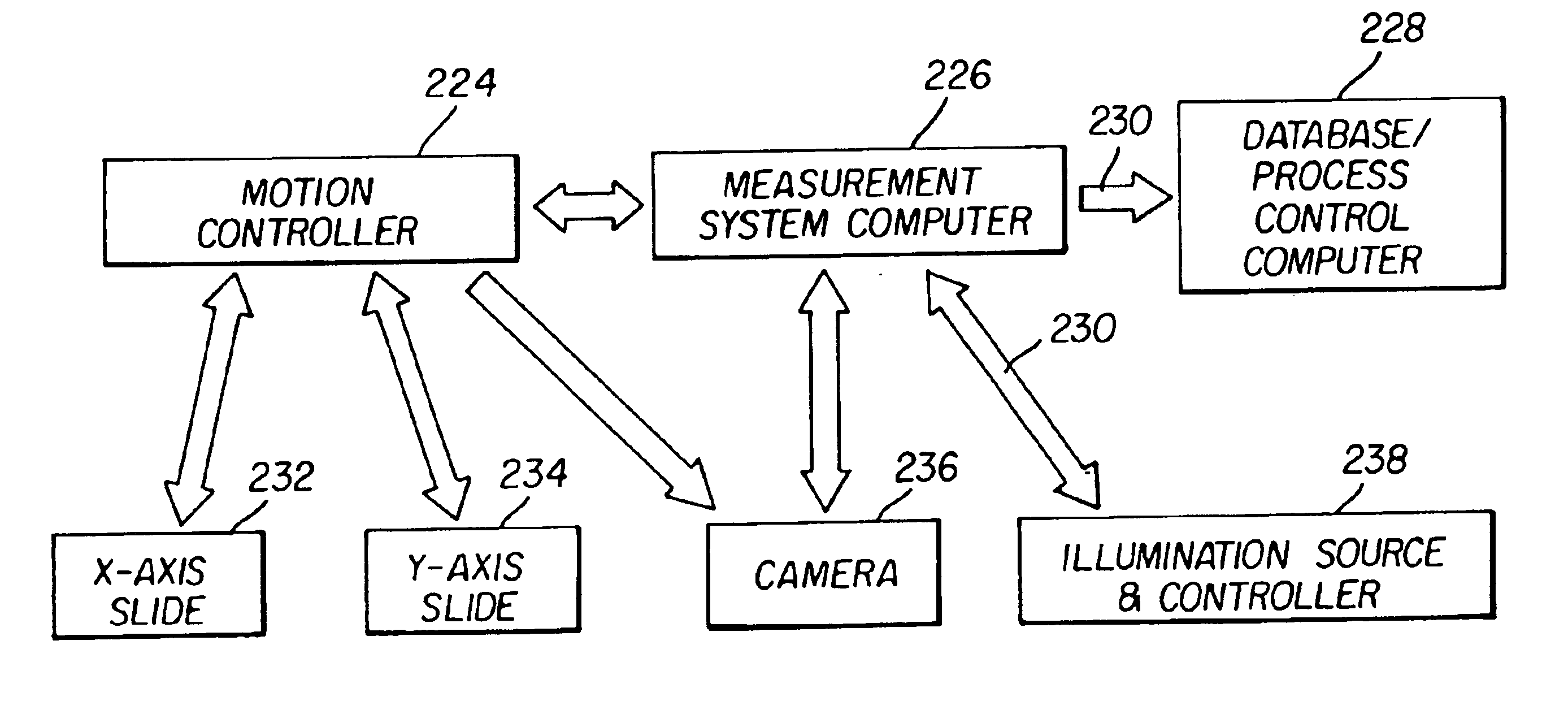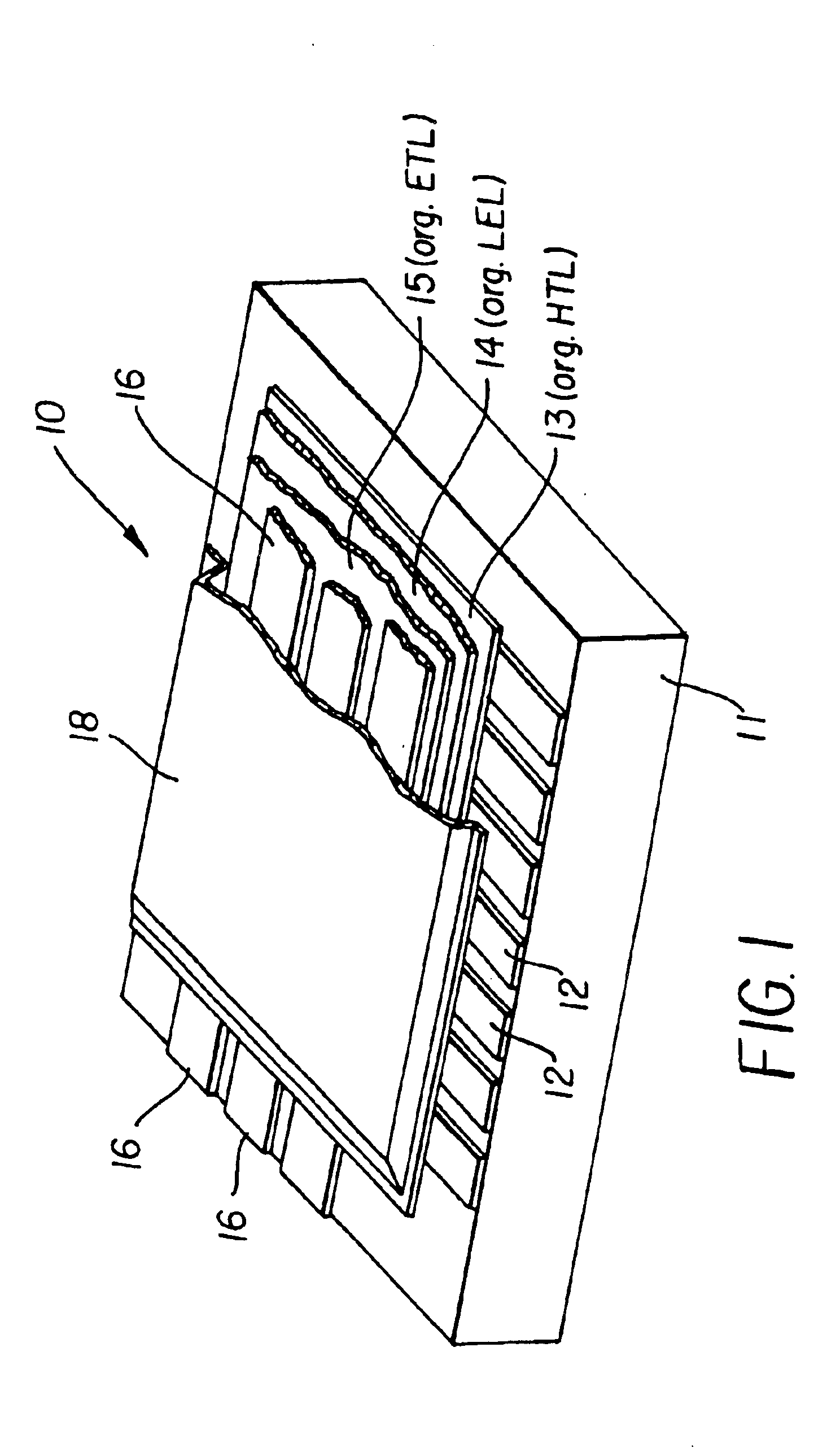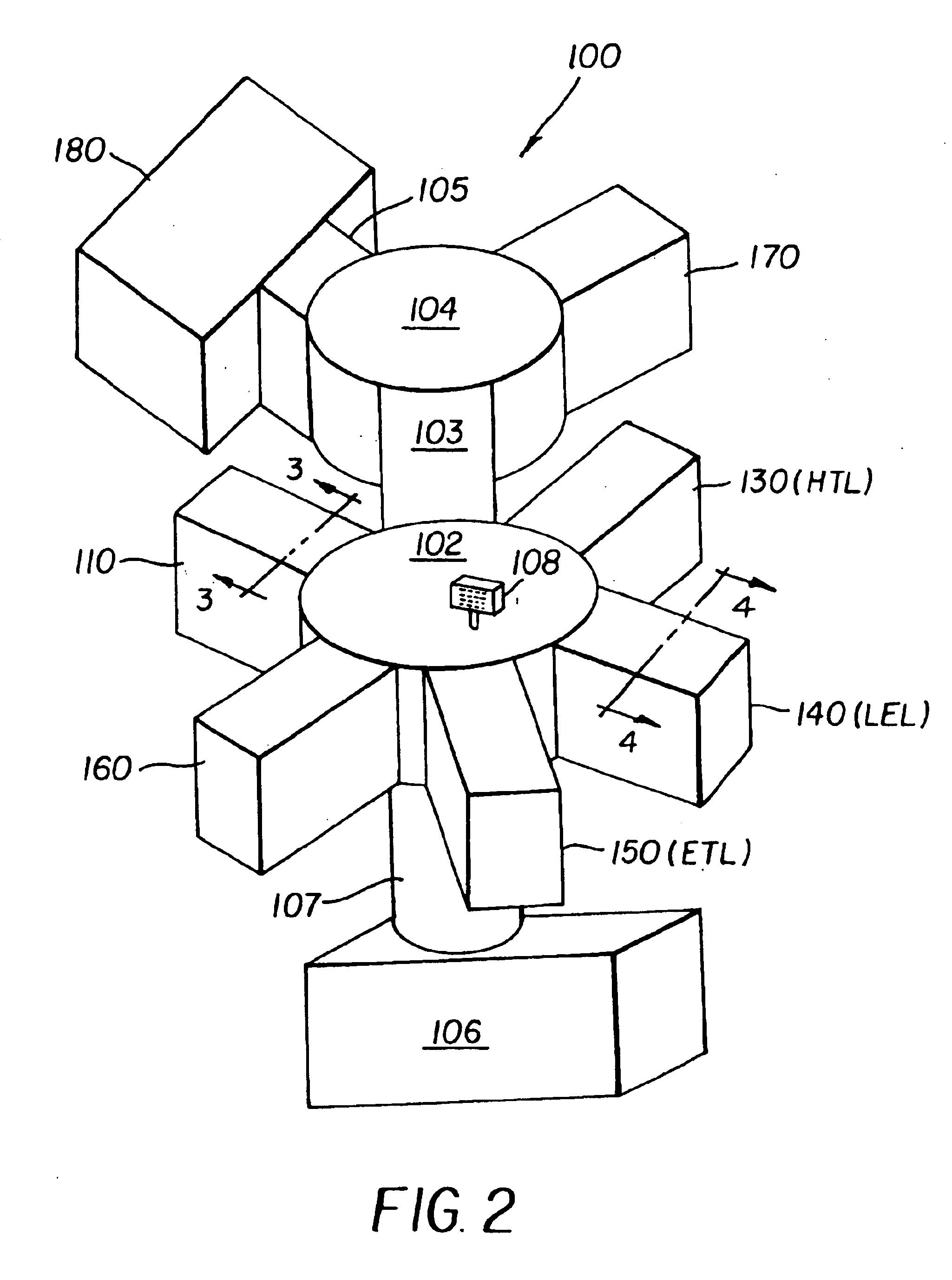Determining defects in OLED devices
- Summary
- Abstract
- Description
- Claims
- Application Information
AI Technical Summary
Benefits of technology
Problems solved by technology
Method used
Image
Examples
Embodiment Construction
[0024]The inspection system described herein utilizes the phenomenon called photoluminescence. Photoluminescence is the process whereby a material absorbs light energy within a certain wavelength range, and re-emits that light energy at longer wavelengths. Phosphorescence and fluorescence are two separate emission pathways collectively termed photoluminescence. The absorbed light is called excitation light, and the resulting luminescent light is called emission light. The wavelengths of absorption and emission are dependent upon the specific composition of the material; in the case of the organic materials deposited in an OLED display, the emission wavelengths from photoluminescence are very similar to the wavelengths generated by electroluminescence, the underlying process for normal display usage. Because the excitation wavelengths depend upon the absorption characteristics of the material to be inspected, a predetermined portion of the spectrum can be chosen for best excitation. ...
PUM
 Login to View More
Login to View More Abstract
Description
Claims
Application Information
 Login to View More
Login to View More - R&D
- Intellectual Property
- Life Sciences
- Materials
- Tech Scout
- Unparalleled Data Quality
- Higher Quality Content
- 60% Fewer Hallucinations
Browse by: Latest US Patents, China's latest patents, Technical Efficacy Thesaurus, Application Domain, Technology Topic, Popular Technical Reports.
© 2025 PatSnap. All rights reserved.Legal|Privacy policy|Modern Slavery Act Transparency Statement|Sitemap|About US| Contact US: help@patsnap.com



